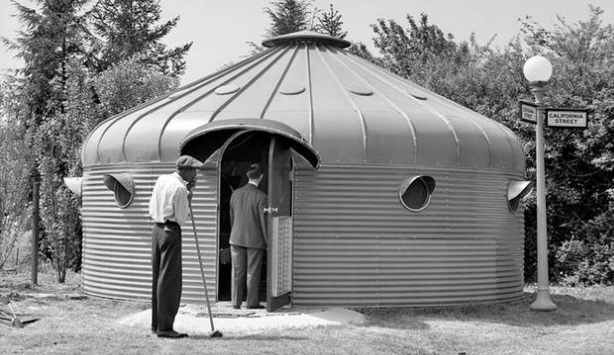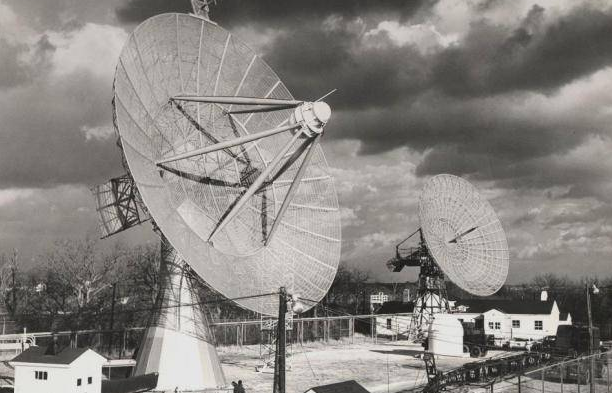
Gizmodo, India wrote a story on January 3, 2014 about some World War Two shelters that have been found in the Camp Evan military base located in Southern New Jersey.
The Buckminster Fuller’s Dymaxion Deployment Units were emergency shelters that were developed during World War Two. Camp Evans has been many things over the years: a node on Guglielmo Marconi’s global wireless “girdle” in 1917, R&D hub for the development of a radar during WWII, and a research base during the Cold War. The base closed down in 1993 and the army had planned to sell the land and tear down the structures on the base.

Fred Carl, a local high school science teacher, took interest in the site and worked with the National Trust for Historic Preservation. He managed to talk the army into keeping the land and a few years had passed when he discovered the abandoned shelters.
DDUs were products of WWII just as the B-29 bomber. With its corrugated steel walls could be shipped to a location flat and then be bolted together. The windows were made of a transparent plastic, which was a rare material that was used in aeronautics. The structure had fireproof curtain that divided the structure into separate “rooms”.
Every DDU cost a mere $1,250 during that time—it equates to roughly $20,000 in today’s economy. The Galveston Daily News ran a feature with the headline “How to be Comfortable Though Bombed” The Winnipeg Free Press a similar story with the headline of “A Shelter in War-A Beach House in Peacetime.”
Many of the shelters appeared in locations all over the world. The true irony is that the war actually destroyed the viability of Bucky’s project. Not too long after the US entered the war, the country began to put a ration on steel and because of this, production of the shelters ended. “A few hundred were put to use by the Army for medical operating rooms and Signal Corps housing,” explains Butler on its website. This includes the 12 that ended up in Camp Evans.
Fred Carl now runs a non-profit organization that is dedicated to educational programs about the technology that was developed at Camp Evans. These programs are called InfoAge and tey are working to restore and reuse the remaining shelters. One of these shelters is being used as an art studio.
